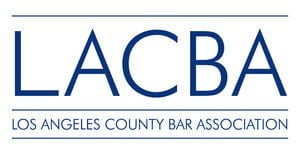Petty theft involves the taking of property or certain services valued at less than $950. One of the most common forms of petty theft is shoplifting. It’s not a major crime, but can still cause real problems for anyone charged with an offense under California Penal Code sections 484(a) and 488.

Learn more about the elements and penalties of petty theft, and possible legal defenses against this charge.
Under California Penal Code Sections 484(a) and 488, petty theft is defined as any theft that:
- Involves the taking of property with a value of $950 or less
- Is not the theft of property directly from another person, such as robbery
- Does not involve the theft of a car, gun, horse, or fruit/nuts/fish/shellfish valued at over $250
Elements of the crime of petty theft
In order to convict a defendant of petty theft, the prosecution must prove the following four elements:
- The defendant wrongfully took property belonging to another
- The property was valued at $950 or less
- The property was taken without the owner’s consent
- It was taken with the intent to permanently deprive the owner of the property
For example, if a customer placed her cell phone on the counter of a coffee shop while paying for her order and it was taken by another person who then left the shop, the person who took the phone could potentially be charged and convicted of petty theft.
Additional types of petty theft
Many petty theft charges are a result of shoplifting, also called petty theft by larceny. An additional element of larceny involves moving the property—even a short distance—and keeping it for any amount of time. For example, if someone takes an article of clothing off a hanger in a store and puts it in her purse, but then decides to put it back, she could potentially be charged with larceny. It can be argued that her actions indicate she had the intent to steal, because she concealed and moved the property, even though she did not follow through on the theft.
Petty theft can also be committed by false pretense, which involves deceiving a property owner; by trick, which is telling a lie or tricking a person into willingly handing over their property; or by embezzlement, unlawfully taking property—usually money—that was entrusted to the accused.
Examples of these crimes include switching a price tag to pay less for an item (trick), using a stolen credit card to purchase an item from a store (false pretenses), or failing to ring up a sale at work and pocketing the cash (embezzlement).
While petty theft originally applied to physical objects, in California, petty theft can also include the theft of gas, water, electricity, and computer services—which are valuable items that can be purchased or sold—as long as the value is under $950.
Penalties for petty theft
In California, petty theft is a misdemeanor that is punishable by up to six months in jail, a fine of up to $1,000, restitution, and/or restraining or “stay away” orders. If the theft involved property valued at less than $50, the prosecutor can reduce the offense to an infraction with only a $250 fine.
Legal defenses to a charge of petty theft
There are many potential legal defense to a charge of petty theft. Only an attorney can examine the facts of a case and advise which strategy would be most effective. However, here are three common defenses:
Claim of right
This defense applies when the person accused of taking the property believed they actually had the right to possess the property in question.
Lost or misplaced property
Someone who found lost or misplaced property and kept it may not be guilty of theft if their intent was to find the real owner.
No intent to permanently deprive
If a person had another person’s property and intended to return it to the owner within a reasonable period of time, it would not be petty theft.










